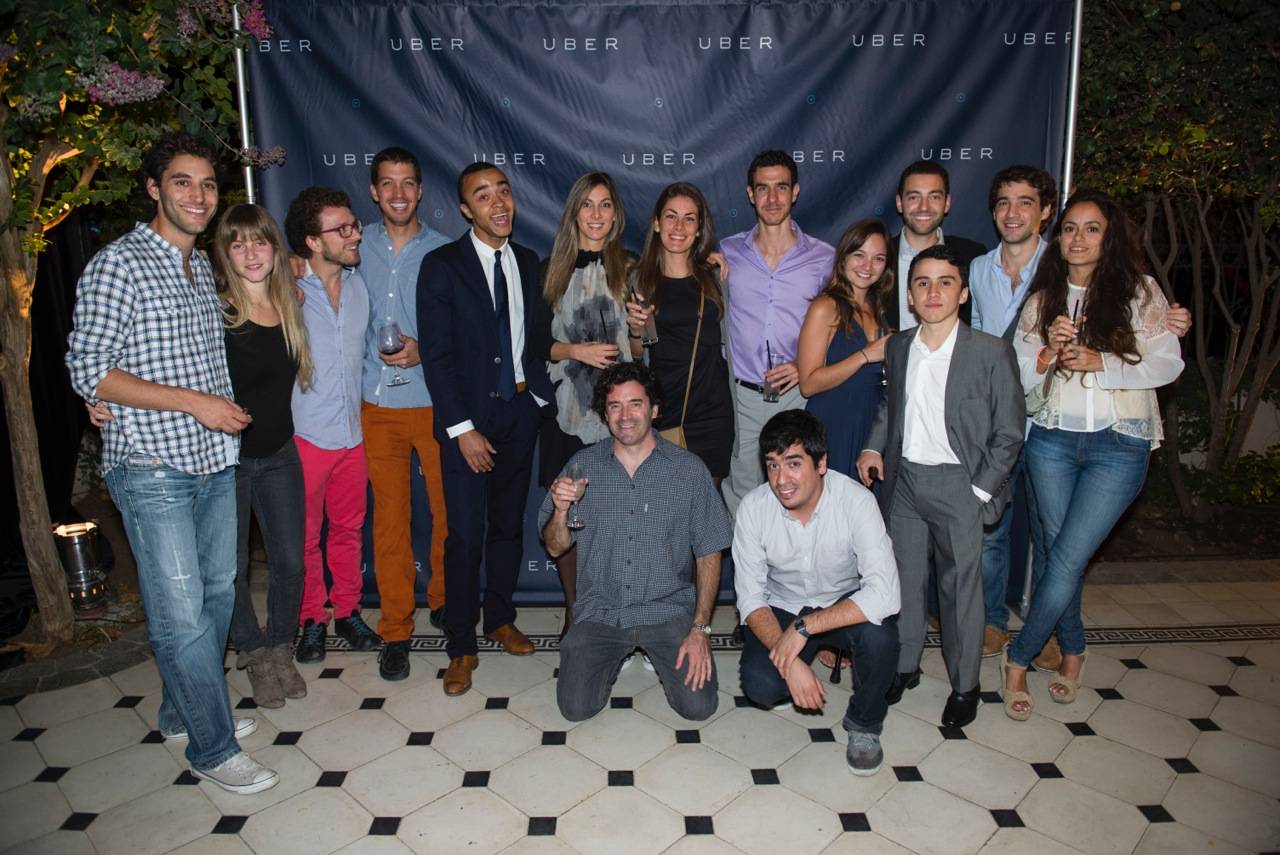Sometimes, when I daydream about the future, I imagine escaping the public transportation madness of my city by making a private chauffeur in a shiny black car appear with the press of a button.
…And then I realize the future has already arrived.
This January 2014, Uber landed in Santiago! Uber is a mobile app-based platform that seamlessly eliminates the inefficiencies of taxicab services of which many of us are far too familiar. Instead of waiting by the side of the road for 20 minutes with your hand raised every time a car that appears to be a taxi passes (if it’s been an indulgent night out, this could include soliciting everything from horse-and-carriage to police vehicle), finally waving down a cab with a less-than-transparent pricing scheme, being dropped off at home while fumbling with your cash (why do NO taxis take credit cards?! We’re in the 21st century!), and finally exiting the vehicle after engaging in a 5-minute heated discussion with your driver about the appropriate tip amount, Uber has invented a better way. Thank God.
Uber allows users to request private vehicles through a smartphone app. The app is integrated with Google Maps, allowing users to see the number and location of cars in their vicinity. Upon requesting a vehicle, Uber tells you exactly how much time it will take for the vehicle to reach your destination; in addition, a picture of your driver, his/her license plate number, and vehicle model appears so that you can easily identify your ride when it arrives. When your driver is getting close, they call or text you to let you know the status of your ride. After reaching your pick-up destination, they greet you by name; upon arriving at your final destination, you simply exit the car. All payment is conducted through the credit card you have linked to your Uber account. No haggling over a tip. No hassle.
**User experience sidenote after having used Uber a number of times throughout the past few weeks: I have always been picked up in a Mercedes, and offered some kind of beverage during my ride. Somehow Uber knows exactly what kind of sparkling apple juice I enjoy most. We’ll save that for another post.
Carlos Leiva and I attended the launch event for Uber at Osadia in Vitacura this past week. We were impressed by the energy and ambition of the Uber team (as well as the free drinks and apps!), and were inspired by the presentation Uber gave that demonstrated the phenomenal growth the company has achieved over the past couple years. After launching in San Francisco in early 2010, the service expanded to four more US cities by 2011. Its growth since 2012 has been even more impressive; between 2012 and 2013 it expanded from 12 to 35 cities nation-wide. As of early 2014, it had launched (or was in the process of launching) in 69 cities globally, including four locations in Latin America (Bogota, Cali, Mexico City, and Santiago).
Sol Estin is the International Launcher leading Uber’s kickoff here in Santiago; he told AndesBeat that “Uber was attracted to the Santiago market because of an opportunity to emphasize three of the values that are important to Uber and that also resonate with Chileans: 1) Convenience (a combination of reliability, availability, and excellent cost-to-benefit ratio), 2) Luxury (an on-demand service that brings you to your destination in comfort and elegance), and 3) Technology.” Sol asserts that the slower nature of the January-February vacation season, in which many Santiago residents are leaving the city, has presented an initial challenge as well as a fantastic opportunity for the company; a slower kickoff has allowed Uber to concentrate its efforts on securing “an excellent fleet of partners and partner vehicles” to be fully prepared for when the city’s residents are back in full force next month.
According to data presented by TechCrunch, it is safe to assume that Uber has grand plans for the future. In its latest round of financing, Uber closed $362.1 million. The largest investor in the round was Google Ventures, whom pledged $257.70 million to the company, which not only represents an 86% chunk of its $300 million a year fund, but also constitutes Google Ventures’ largest deal ever. In August 2013, “Inc.” reported that Uber had experienced 18% month-over-month growth throughout the past year – with such high growth figures, Uber has its eyes set on a huge global expansion push. In mid-2012, it had 75 employees. It now has over 400 – a number that is certain to expand as it solidifies its roots globally.
Investors, passengers, and drivers alike are pleased with Uber’s performance; however, like all technologies with innovative, disruptive business models, it has been challenged by regulatory headaches in cities worldwide. An example is a 2012 case in Boston in which the state of Massachusetts issued a “cease and desist” order, implying that Uber’s use of GPS technology to track fares was not within the realm of established standards. Facing intense dissatisfaction and pressure from Uber users, Governor Deval Patrick reversed the ban. In the midst of these regulatory issues, one thing is clear: passengers will band together to protect infringement against an easy-to-use product that addresses a real need. Uber’s expansion into Latin America offers a welcome alternative to the existing transportation infrastructure. Bienvenidos, Uber!

